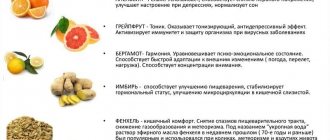From this article you will learn:
- What are effective exercises to relax different muscle groups?
- What exercises are used to relax the muscles of the back and neck?
- What is a set of exercises to relax the facial muscles?
Have you ever thought about how much stress has on you? Do you suffer from insomnia, increased irritability or fatigue? Or maybe your friends, looking at your condition, have long been hinting to you that it’s time to rest? If at least one of the signs listed suits you, then perhaps you really need relaxation. Learn, first of all, to relieve muscle tension, and then you will notice how your quality of life will improve. In our article we will tell you in more detail about what relaxation exercises you should master.
What is relaxation?
Rest is necessary for any person, because physical exhaustion and fatigue are the first factors that weaken the body and make it susceptible to various viruses and diseases, its immunity weakens. A state of emotional tension helps to increase muscle tone, being a reflex reaction of the body. Relaxation is the ability to relax muscles, let go of heavy thoughts, get rid of stress, so that internal anxiety goes away and the body receives a charge of energy for further activities.
What is the danger
Stress is of great importance for the human body. Accumulated fatigue causes irritation, as well as many diseases. People who do not know how to relax in time are at risk of becoming chronically tired and have problems communicating because they experience irritation.
In order to protect yourself from excessive stress, you need to regularly perform a set of relaxation exercises, and you can also periodically use this complex when you feel that fatigue has begun to accumulate.
Why is relaxation needed?
To restore the physical strength of the body, there is sleep and rest; signs of emotional exhaustion arising from unfavorable external conditions and stressful situations can be eliminated by muscle relaxation. There are many techniques aimed at relaxing the body. All of them create a feeling of heaviness, warmth, and immerse a person in a state of peace. As a result, signs of overwork are relieved, performance increases, and mood improves. Musical accompaniment - sounds of nature, calm melodies make relaxation effective.
Recommendations
In addition to performing relaxation exercises for children and adults, the following recommendations should be followed as preventive measures:
- You need to ensure restful, sound sleep at least seven hours a day.
- Take more walks in the fresh air.
- It is advisable to talk to people and walk slowly.
- Don't get ahead of yourself, it's better to live for today.
- Look in the mirror, you need to smile and praise yourself.
- You can’t store emotions and problems inside yourself. They need to be resolved immediately with the support of loved ones.
- It is recommended to drink a cup of herbal tea before bed.
- You don’t have to try to please everyone all the time, it’s unrealistic.
- It is important to devote at least one hour a day to yourself and doing what you love.
- Every decision must be made in a calm environment.
- It is necessary to return more often to pleasant memories and spend time with people dear to your heart.
The article describes relaxation exercises for adults and children. They will help you cope with difficult situations and relieve stress.
Relaxation methods
Many relaxation techniques date back over a thousand years. The need for relaxation to restore mental and physical strength has been known since ancient times. Relaxing the body can relieve tension in a person’s nervous system, restore the body’s internal balance, and clear the mind of obsessive thoughts. Special practices aimed at eliminating muscle tone are useful for people, as they can eliminate the symptoms of dangerous diseases. Among the main relaxation techniques it is worth highlighting:
- muscular;
- visual;
- respiratory.
Muscle relaxation
By understanding how relaxation works, you can try to improve the effectiveness of this procedure. Relieving tension in muscle fibers helps in relaxing the muscles and the entire body as a whole. This type of relaxation is aimed at alternating tension and relaxation of various muscle groups: face and neck, arms and chest, back, abdomen and legs. When you mentally “turn off” a specific muscle, you can feel peace, a sense of peace. Ten minutes of muscle relaxation in this mode can replace 60 minutes of sleep, provided proper breathing and complete immersion in the process.
- You need to lie on the floor, place your arms along your body, palms up, and spread your legs slightly to the side.
- You should breathe slowly and calmly through your nose.
- Let go of all thoughts from your head for a few minutes, focusing on your breathing.
- As you inhale, tense your whole body, after a few seconds relax, repeat the exercise 3 times, and then try to feel how your body gets heavier.
- Next, you need to tense muscle groups in turn and then relax: legs, buttocks, abdominals, chest, arms, shoulders, face, head.
- After all the muscles of the body have been worked, you need to lie quietly for a few seconds, restoring your breathing.
Visual relaxation
Imagining a positive image or a specific situation is a well-known relaxation method based on visualization. Any episodes from life that are pleasant to remember, mountain landscapes, sea beaches with the addition of your own image are perfect for meditation and relaxation. Pleasant, unobtrusive music, instrumental compositions, and classical works can be a good accompaniment for complete relaxation. The visual relaxation technique is simple:
- Sit on the floor, lying on your back, turn on the music, completely relax.
- Breathe slowly and calmly through your nose.
- Imagine yourself on the warm sand by the seashore, hearing the sound of the surf and the cries of seagulls in the distance.
- Pay attention to your legs, arms, torso, head, relaxing each part of the body.
- Feel lightness and calm.
Breathing relaxation
The relaxation breathing technique can be used both in combination with other types of relaxation, and separately from them, as an independent practice. When relaxing before bed, proper breathing helps you let go of the day's problems and immerse yourself in a state of peace and serenity, which promotes proper rest. Breathing exercises and neuromuscular relaxation are closely related; during exercise, blood flows faster through the veins and vessels, saturating the body with oxygen, calming and removing stress.
- Proper breathing relaxation is impossible without the ability to breathe with your stomach.
- The exhalation must be at least twice as long as the inhalation.
- Once you no longer need to control your breathing, you should try to relax your body.
- Let go of thoughts and worries, lie still for a few minutes.
Relieving tension
In order to learn how to relieve stress and relax, there are special exercises. You will need a separate room in which you can retire so that no one distracts or interferes with the exercise.
You need to take a comfortable position, you can turn on monotonous music or just a beautiful composition. Concentrate your attention on your breathing and physical body. In this case, special concentration should include inhalations and exhalations.
To relieve tension, special breathing exercises are often used. It allows you to get rid of tension in a short time. When breathing, a person frees his thoughts and directs positive energy for his own benefit.
The fatigue accumulated during the day should go away. If you do not relieve yourself of tension in time, it can result in illness, chronic fatigue and even depression.
People who regularly practice yoga know how important it is to be able to switch off and relax in time. Not everyone is given this ability by nature, but it can be developed.
Relaxation time
Finding free time to spend alone with yourself and completely relax is necessary for every person who cares about their own health. Muscle relaxation, removing tension, taking a relaxation bath is best before bed, when all the housework is done, homework with schoolchildren has been learned, and no one is interfering with proper rest. The opportunity to close yourself in a room and spend half an hour alone with your thoughts, lie down to pleasant music, fills the body with lightness and gives new strength. It is recommended to immerse yourself in relaxation whenever a person feels tired.
Self-regulation
In addition to a special set of relaxation exercises, there are many other ways to relieve stress and relax:
- laugh heartily, smile, joke;
- think about pleasant things, dream;
- pull yourself up several times;
- look at something pleasant and beautiful;
- mentally turn to the Universe or God;
- take real or imagined sunbathing;
- read poetry;
- do something nice;
- take a walk in the fresh air.
Relaxation methods
Daily release for the body - relaxation can help you survive in difficult modern conditions. Deep relaxation techniques are aimed at working with your body and mind. The ability to control muscle tone, bring breathing into the desired rhythm, self-hypnosis - these techniques help to achieve a feeling of warmth and peace. Experts believe that the point on which relaxation of the entire body depends is the solar plexus. Other common ways to relax are:
- massage;
- bath;
- diaphragmatic breathing;
- swimming.
Breathing technique
The purpose of relaxation exercises is to relax the body and reduce mental stress. Breathing exercises play an important role in this. Its advantage is that most exercises can be performed anywhere:
- During each exhalation, it is necessary to relax the upper pectoral muscles and shoulders as much as possible, lowering them down.
- While inhaling through the nose, silently count to four, while exhaling, count to eight. This exercise is especially effective during a stressful situation and helps well with insomnia.
- Breathing technique from yoga. The right nostril is closed with the thumb of the right hand (men), and the left nostril with the left hand (women). A deep breath is taken through the other nasal opening and at its peak, the second nostril is closed with the ring finger, exhaling through the mouth.
Music for meditation and relaxation
Special music is suitable as musical accompaniment in moments of relaxation. Rhythms and melodies help you look deep into yourself and achieve maximum relaxation. Cosmic overtones, shamanic rhythms, and the use of unusual musical instruments make trance-style motifs an indispensable companion for various practices and relaxation. The TOP 10 performers in the “relaxation” category are as follows:
- "Enigma"
- "Amethystium";
- "Broadway project";
- "Apparatus";
- "De phazz";
- "Air";
- "Deep forest";
- "BT";
- "Vangelis"
- "Jay-Jay Johanson."
Toddlers (up to 5 years old)
Young children find it especially difficult to control and express their feelings and emotions. If you do not teach a child to think about his words and actions, he will grow up nervous, repressed or, conversely, hyperactive, irritable and emotionally unstable. That is why it is very important to help your child find a way to channel his energy in the right direction and relax.
At this age, children are very receptive to everything new, so they are easy to learn, including relaxation techniques. Alternating physical and breathing exercises, auto-training, drawing and sculpting to calm music can help get rid of negative energy and calm down.
Relaxation exercises for preschool children are as follows:
- The child is asked to imagine the moment of a quarrel; he must scare the opponent with a scream or a frightening grimace, put out his fists and stand in a tense position. After a minute, you need to make friends with your opponent, smile and greet. The exercise can be performed in pairs, but be sure to change roles.
- Another relaxation option looks like this. The child is asked to lie on his back and imagine something pleasant, for example, a burning fire. You need to close your eyes and, breathing deeply, imagine the smell of a fire, the crackling of logs. This exercise helps awaken your appetite.
Skin Conduction Training
Being interconnected with the emotional state, skin electrical activity (ESA) is widely used for relaxation biofeedback training in the correction of various emotional disorders, to increase mental stability in stressful conditions, and in the treatment of a number of diseases.
Physiologically, EAC reflects the activity of the sweat glands and, therefore, the activity of the sympathetic nervous system. In turn, sympathetic activation reflects the level of emotional arousal.
The electrical conductivity of the skin is measured using electrodes placed on the fingers. This conductance increases as sympathetic activation increases and decreases as the patient relaxes. Thus, by learning to manage the skin reaction, the patient learns to manage his emotions.
Since a wide range of psychosomatic conditions are based on acute or chronic emotional stress, training using EAC biofeedback technology, aimed at increasing emotional stability and overcoming internal tension, has a high rehabilitation and preventive effect. Conducting trainings for practically healthy people, eliminating excessive autonomic activation, makes it possible to reduce the psychophysiological cost of activity and improve its quality, especially in situations of high responsibility, lack of time, information and funds, as well as in conditions of probable danger and interference.
Types of relaxation training
The BOSLAB series devices implement the most effective relaxation training techniques that produce a pronounced clinical effect. The biofeedback method allows you to significantly reduce the time of learning basic relaxation skills, their consolidation and automation.
The choice of the type of relaxation training is based on the patient’s complaints and monitoring of psychophysiological signals and identifying “bottlenecks” for a given patient, as a result of which the parameters by which the training will be carried out are determined.
For example, if the patient’s main complaints are muscle stiffness, a feeling of constant tension in the shoulders and headaches in the back of the head, which are usually accompanied by high electromyogram values, EMG muscle relaxation training can be recommended. The training will lead to the formation in the patient of the ability to deeply relax those muscles, the increased tone of which underlies various pathological syndromes.
Exercises for the eyes for myopia according to E.S. Avetisov
The technique proposed by Avetisov is used not only for the treatment of myopia. It has proven its preventive value. The method is based on three sets of exercises.
The first group of exercises according to Avetisov Gymnastics is aimed at improving the nutrition of eye tissue with oxygen by stimulating blood circulation. The complex includes 5 exercises:
1. Close and open your eyes wide, doing this slowly, with some effort, for 5 seconds. Correct execution involves repeating the task 6-8 times. 2. Blink for 15 seconds at an accelerated pace, interrupt the task for a few seconds and repeat it. This is done 5-6 times. 3. Massage the eyeballs with your index fingers, closing your eyelids. 4. Lower your eyelids and apply light pressure on your eyes with your fingers. Apply pressure for 3 seconds. 5. Place the index finger of your left hand on your left eyebrow and your right hand on your right eyebrow. Try to close your eyes while resisting the tension of the skin with your fingers.
Exercises for myopia according to Norbekov
Gymnastics according to Norbekov helps improve blood circulation in the eyes. To achieve a positive effect from exercise, you need to do the following:
1. Stand up straight and imagine that you are looking through your brow ridges. Keep your eyes on the ceiling. After this, look down, imagining that your gaze is passing through the larynx. 2. Direct your gaze left and right, imagining that you are looking through your ears. 3. Relax your eyes and in your imagination draw two diagonal lines from the lower left corner and from the lower right corner. After this, you also need to mentally erase the lines.
4. Draw a figure eight with your eyes, moving your gaze first in one direction and then in the other. You can't move your head. Perform the exercise 8 times at a slow pace. 5. Touch your index fingers to your nose. Gradually move your fingers away from your face. With your left eye you need to look at the finger of your left hand, and with your right eye you need to watch the right finger. Repeat the task three times. 6. Imagine that there is a round wall clock in front of you. Move along the edge of the watch, that is, around the circle, with your gaze clockwise, increasing the diameter of the dial. After this, return your gaze to the starting point, moving counterclockwise.
Gymnastics for the eyes for myopia from Zhdanov
Like previous scientists, Russian ophthalmologist Zhdanov continued to develop Bates's ideas. However, our compatriot supplemented Bates’s set of exercises with the teachings of yoga. Zhdanov’s method allows you to restore the elasticity and mobility of different groups by meeting a number of conditions:
- remove contact lenses or glasses before gymnastics;
- do exercises every day 3 times;
- do not make sudden movements with your eyes;
- try to relax your visual organs as much as possible;
- perform at least 3 repetitions for each exercise.
Prepare a sheet of Whatman paper and write on it the phrase “Give a person vision and the opportunity to correct many anomalies.” You can take Sivtsev’s table as an example. However, in the top line you need to place the word “give” instead of the letters “Ш” and “Б”. Write the rest of the phrase on the bottom lines, repeating it until 12 lines are completed. Next, make a second table of small size - A4 format. Start exercising. In total, Zhdanov proposed two sets of tasks. The first one is done like this:
- move away from the table to a distance from which the upper letters are clearly visible without eye strain;
- keep the second table at arm's length;
- Cover one eye with a bandage;
- read the letters on the top line of the large table;
- move focus to the largest row of a small table;
- look again at the large poster and again at the small one;
- Repeat these exercises on the eye that was closed.
Gradually you need to move from the top lines to the bottom. The second set of exercises is performed without a table:
- blink frequently with your eyes relaxed;
- move your eyeballs left and right, drawing horizontal lines in your imagination;
- mentally draw vertical lines by moving your eyes up and down;
- draw a square clockwise with your eyes, erase it in your imagination by moving your eyes along the line of the quadrangle counterclockwise;
- draw and erase in the same way a circle, an infinity sign, a zigzag, a wavy line;
- Blink your eyes quickly.
These exercises help not only with myopia. They can be used to relax the eye muscles with increased visual fatigue, astigmatism, farsightedness, and strabismus.
The third group of exercises according to Avetisov
Another complex is designed to increase the accommodative abilities of the eye. Stand up straight and do the following:
- look ahead for a few seconds, moving your gaze from the tip of your finger, located 30 cm from your face, to distant objects;
- extend your hand forward and look at the tip of your index finger, and then bring it closer to your nose until the outline of the finger begins to double;
- look at the index finger of your outstretched hand with peripheral vision, cover one eye with your hand, and move the index finger of the other hand closer to your nose and away from it;
- Attach some mark to the glass of the window, for example, colored paper, and move 30 cm away from the window. Move your gaze outside the window, and after 2 seconds look at the mark. Do this exercise for 5 minutes.
Remember that the presented exercises cannot cure myopia, but they can help stop its progression. In addition, gymnastics helps relieve eye fatigue and eliminate other symptoms of asthenopia. Exercise daily, following your doctor's instructions.











